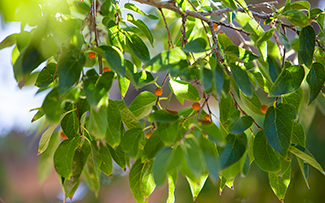Tree of the Month: Canyon Hackberry
John Eisenhower of Integrity SavATree talks about the Tree of the Month, the Canyon Hackberry!
Tree of the Month: #CanyonHackberry
Scientific: Celtis reticulata

Common: Western Hackberry, Netleaf Hackberry, Canyon Hackberry
Family: Cannabaceae
Origin: Riparian and woodland scrub habitats across much of the western United States into northern Mexico at elevations in the southwest United States between 2,000 and 5,000 feet.
Landscape Use: Mesic/xeric transition shade tree, parks, open green spaces, expansive desert gardens, large residential landscape settings.
Form & Character: A deciduous broadleaf tree, upright, stout, sturdy, homely, clumsy
Seasonal Color: Some yellow brown fall foliar color.
Size/Growth Habit: Strongly upright to 30 to 60 feet in height with near to equal spread, mature branches spreading, young branches are irregular and twisted and sometimes pendulous.
Foliage/Texture: Scabrous ovate leaves with an in-equalateral base tapering to a acuminate tip, 2 to 3 inches long, veins prominent, slightly serrate, abaxial leaf surfaces are scabrous like sandpaper, trunk is generally smooth and greyish with distinctive hackberry "warts"; medium coarse texture.
Flowers/Fruit: Flowers insignificant in spring followed by fruits that are a small orange reddish drupe to 3/8 inches wide on a 3/8 inch peduncle. Fruits are coveted by birds.
Comments: Western hackberry is an exceedingly tough tree with a homely and clumsy appearance; ergo, it is rarely planted as an amenity tree in Phoenix landscapes. However, for water conservation and native plantings purposes, western hackberry should be used more often in Phoenix landscapes as a deciduous shade tree. C. occidentalis (eastern hackberry) is very similar but larger and more vigorous with foliage to 5 inches long. C. ehrenbergiana (desert hackberry) is a shrubby relative that is indigenous to the desert southwest and is frankly more serviceable than C. reticulata for native desert landscapes. Rather than in the low desert, western hackberry is more suitable as a shade tree for mid-elevation urban landscapes landscapes in Arizona such as are in Sierra Vista, Benson, Prescott, and Payson. Western Hackberry can naturalize in favorable settings.
Tree of the Month | #CanyonHackberry
For more info view the full plant specifications from ASU's Virtual Library of Phoenix Landscape Plants: Canyon Hackberry
###
Photo Credit:
